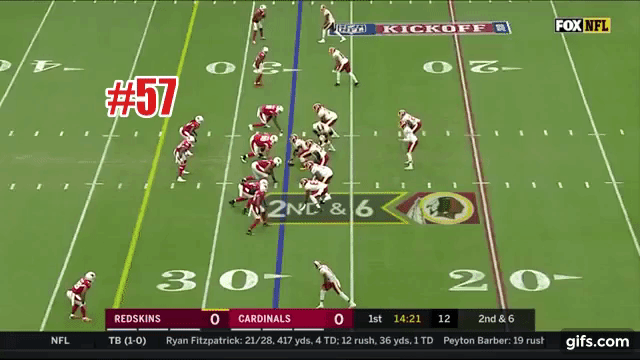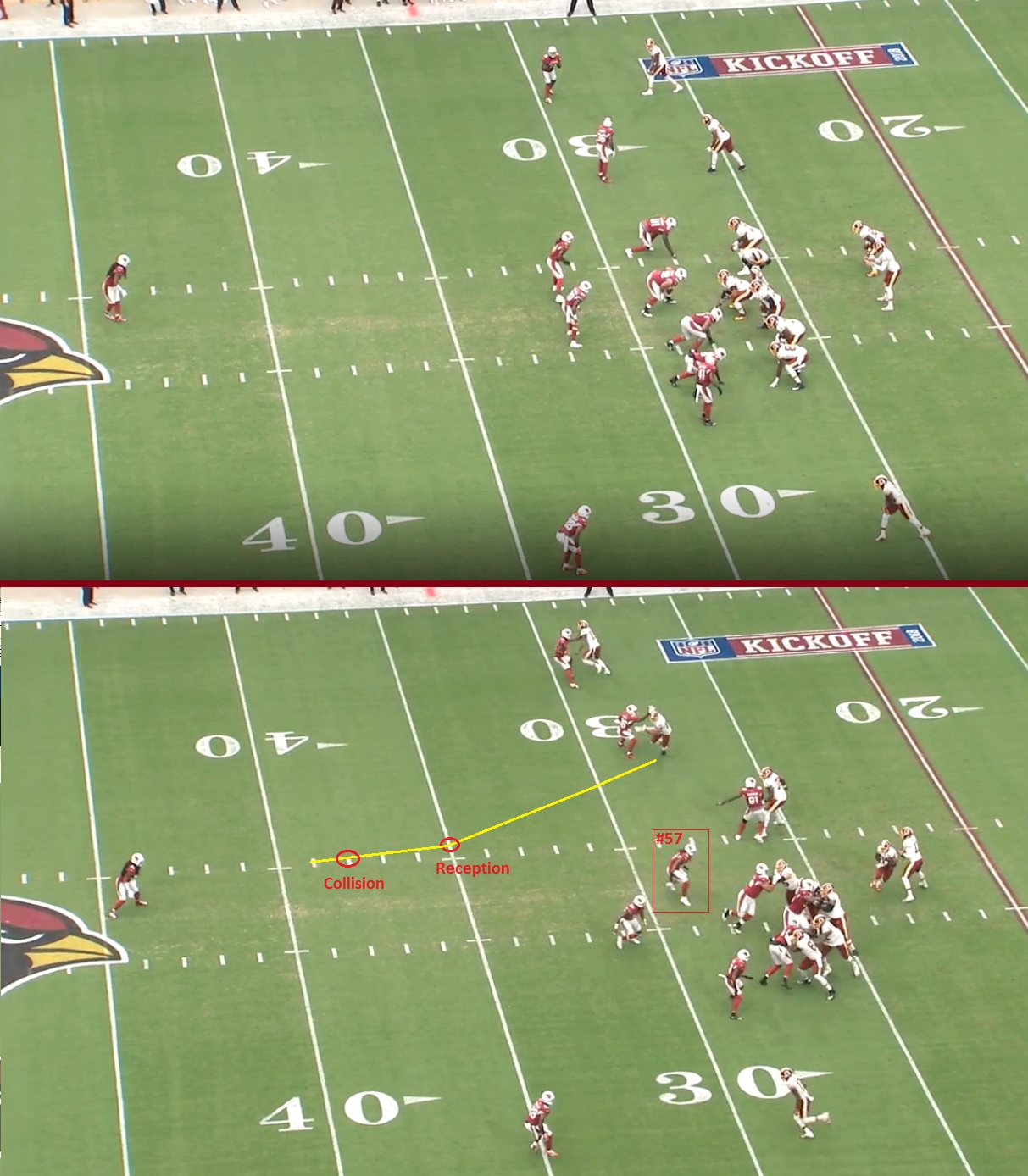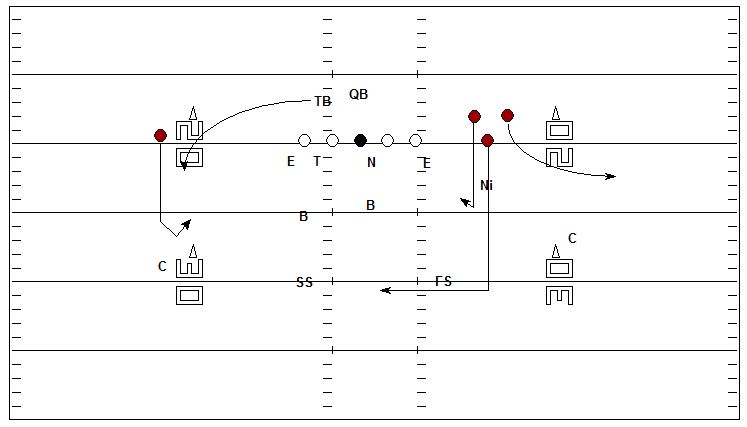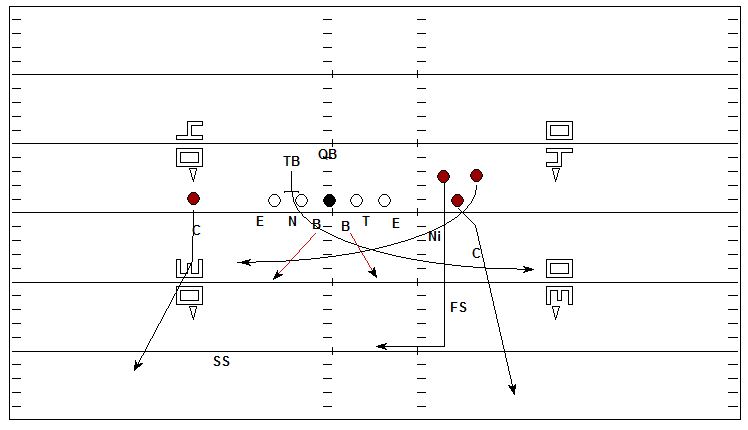First drive, play no. 2, situation: 2nd & 5, field position: WSH 28.
There's a few basic points usualy mentioned by the coaches whilst analysing the RPO offence (and I'm not talking about communism). Perhaps the most important is the pre-snap and
post-snap read made by the QB. What makes this play so interesting is that the pass-or-run choice depends also on the linebacker's reaction. As a defensive co-ordinator I've always been
obsessed with covering the hook. This play shows you why the hook zone is so important.

Watch Josh Bynes, the inside linebacker (#57). He's Alex Smith's key. If he goes with the running back, then there's nobody to cover the hook zone. If he drops to the hook zone, then
there's nobody to pursue the running back. His first responsibility is to stop the run. He opens his hips to the inside and takes three steps up field. He then recognises a fake, drops immediately,
but by the time he gets back to the 32 yardline, the receiver slants to the inside and continues to the seam. Jordan Reed gained enough distance to have his inside arm free and to secure the catch.
In the picture below you see that the single-high safety was 15 yds. off the line of scrimmage. Tre Boston was the quarterback's pre-snap read. Combining the depth of Boston's alignment with
the empty hook, the play became a one-on-one matchup between Jordan Reed and Bishard Baker.

There's not much the defensive unit could do against this well designed and equally well executed play. Calling this play early in the game was also an indicative of a well designed offensive game plan.
Later on the defenders covering the #2 receiver could get more inside leverage to prevent the quick slant, but let's not forget that this was the second play of the first offensive drive.
One additional interesting point. Watch the left defensive end. It looks like nobody had taken Smith for a runner untill he actually started running with the football. I may have my doubts if he's a dual-threat QB,
but from the standpoint of a defensive co-ordinator that must have been a surprise.
Two very well designed plays against 2-high safeties. The first reminds me of one of my favourite passing concepts - the snag. The second is a very dangerous play based on the shallow crossing
routes.


If you ever wondered why offensive line coaches put so much emphasis to he inside priority, the picture below offers a perfect explanation. I obviously don't know for sure what happened, but
it looked to me like a miscommunication problem. There were 7 defenders in the box, three dwon-linemen (notice the techniques: 3-0-3), two OLBs, and two more defenders aligned in both A gaps.
In phase 2 (decision making), you can see both offensive guards double-teaming the 3-tech defensive linemen. Corey Peters engages Chase Roullier, which leaves two blitzers against pass-protecting
Chris Thompson. Something must have went wrong - for a moment Brandon Scherff had extended his inside arm, but then continued to block Robert Nkemdiche. Now let's look to the right. Shawn Lauvao
did exactly the same (eventually, unlike Scherff, he tried to pick up the blitzer). Does it mean the OL didn't expect both Antoine Bethea and Deone Bucannon to blitz? It's very likely. One is certain:
this time the guards didn't follow the inside priority principle.





